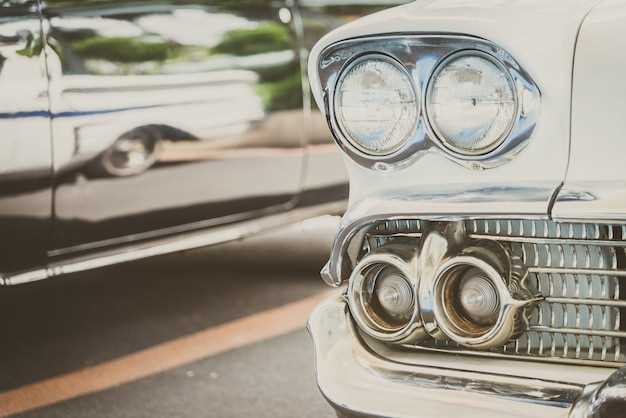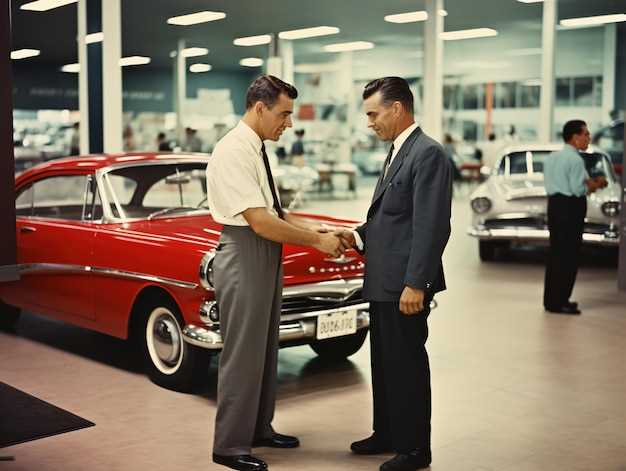Pros and Cons of Importing a Classic Vehicle

Importing classic vehicles has become a popular trend among automotive enthusiasts and collectors alike. The allure of owning a timeless piece of automotive history can be enticing, but the process of importation comes with its own set of challenges and advantages. Understanding the pros and cons of importing classic cars is essential for anyone considering this endeavor.
On one hand, the pros of importing classic vehicles include access to rare models not available in your home country, the potential for better pricing in international markets, and the thrill of restoring or owning a piece of history. These vehicles often evoke nostalgia and can serve as a valuable investment. However, there are also significant cons to consider, such as import regulations, potential high shipping costs, and the need for extensive paperwork, which can complicate the process.
As you weigh the pros and cons of importing classic vehicles, it is crucial to gather all necessary information to make an informed decision. This article delves deeper into each aspect, providing a comprehensive overview for aspiring classic car importers.
Understanding Legal Requirements for Importing Classic Cars

Importing classic cars can be an exciting endeavor for enthusiasts, but it is essential to understand the legal requirements involved. Various regulations exist that can affect the import process and can be categorized into pros and cons.
One pro of importing classic vehicles is the potential for relaxed emissions standards in some jurisdictions. Many classic cars are exempt from stringent emissions regulations, making it easier to import vehicles that might not meet modern standards. However, this varies by country and region, so it is crucial to confirm specific rules applicable to the destination.
Another pro is that vintage vehicles often appreciate in value, making them a worthwhile investment. However, it is necessary to comply with legal requirements to ensure that the value of the investment is protected. Documentation such as ownership history, and proof of authenticity may be required to confirm the car’s classic status.
On the flip side, a significant con involves compliance with customs regulations. Many countries impose specific duties and taxes on imported vehicles, which can increase the overall cost significantly. Additionally, some nations have restrictions on the age of vehicles that can be imported, which may limit options for certain classic models.
Furthermore, failing to adhere to legal importation processes can result in penalties, including fines or the seizure of the vehicle. Ensuring proper emissions testing, securing a vehicle title, and acquiring applicable importation permits are essential steps. Thorough research into the laws governing the import of classic cars in the destination country is crucial.
In summary, understanding the legal requirements for importing classic cars includes weighing the pros and cons, recognizing exemptions, and navigating the bureaucratic landscape. Awareness of and compliance with these regulations will facilitate a smoother import process and enhance the overall experience.
Cost Implications of Importing Vintage Vehicles
Importing classic vehicles can be an exciting venture, yet it comes with various financial implications that potential buyers must consider. Understanding these aspects is crucial for making informed decisions.
One of the primary pros of importing vintage vehicles is the potential for cost-effective purchases. Depending on the market, some classic cars can be found at lower prices overseas. This can be particularly advantageous for collectors looking for rare or unique models that may not be available locally.
However, there are notable cons associated with importation costs. Shipping fees can significantly increase the overall expenditure. These costs may vary based on the destination, size of the vehicle, and shipping method chosen. Additionally, insurance during transit adds another layer of expense that should not be overlooked.
Moreover, prospective owners need to factor in import duties and taxes, which vary by country. These tariffs can lead to unexpected financial burdens, often making the process more costly than initially projected. It is essential to research regulations in both the exporting and importing countries to avoid surprises.
Furthermore, classic vehicles might require extensive restoration work once they arrive, adding to the total cost. Maintenance and upgrades can be necessary due to age, which could entail substantial investment over time.
In summary, while there are undeniable pros to importing classic vehicles, such as the availability of unique models, the cons in terms of cost implications–shipping fees, import duties, and potential restoration expenses–must be thoroughly evaluated to ensure a successful purchase.
Evaluating the Impact on Insurance and Maintenance

Importing classic vehicles presents several distinctive factors affecting both insurance and maintenance. Understanding these elements is crucial for current and prospective owners who wish to enhance their experience with these timeless automobiles.
Insurance Considerations: Importing a classic vehicle often leads to higher insurance premiums compared to domestic models. Insurance companies typically assess risk based on factors such as rarity, value, and repair availability. Classic cars, especially those that are imported, may not have readily accessible parts or repair services, which can elevate costs. Additionally, insuring a classic vehicle can involve specialized policies that cater to vintage automobiles, further influencing the price of coverage.
However, importing can also present pros in insurance options. Some insurers offer classic car coverage specifically designed to reflect the needs of enthusiasts. These policies may provide lower premiums due to limited mileage requirements or agreed value coverage, which protects the car’s worth adequately in case of damage.
Maintenance Challenges: Maintaining an imported classic vehicle can be both rewarding and challenging. The availability of parts is a significant consideration; imported cars might require specific components that are not easily found in local markets. This could lead to longer waiting times for part delivery, increasing the overall maintenance cost. Furthermore, skilled mechanics familiar with the intricacies of classic imports might be scarce, demanding a premium for their expertise.
On the flip side, the maintenance of an imported classic vehicle can help establish a strong connection between the owner and their car, leading to personalized restoration and upgrades that enhance performance and aesthetics. Enthusiasts often appreciate the journey of sourcing parts and bringing a classic to optimal condition, which can be a rewarding aspect of ownership.
In summary, while importing classic vehicles introduces unique challenges regarding insurance and maintenance, it also opens doors to specialized services and personal enrichment. Understanding these aspects will help potential owners make informed decisions that align with their passion for classic cars.



